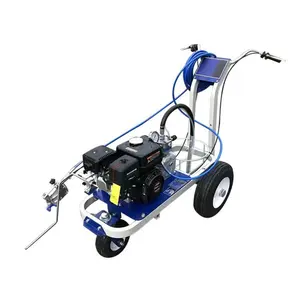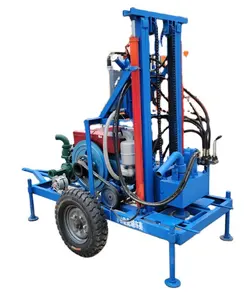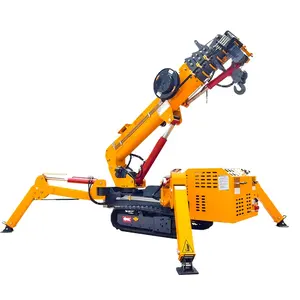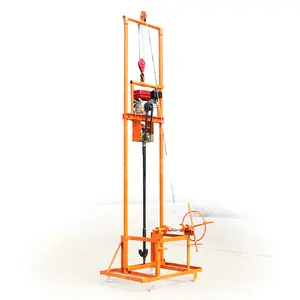Sektörünüzde popüler






Elektrik güç iletim hattı için NX tipi kama germe kelepçesi/kama kelepçe/ölü uç kelepçe
₫55.986 - ₫132.584
Minimum Sipariş Miktarı: 100 Adet







Çıkmaz fiber optik kablo için alüminyum çapa kelepçe türleri çapı 8 ila 15mm
₫40.463 - ₫55.986
Minimum Sipariş Miktarı: 100 Adet







ADSS kutup damla ankraj kelepçeleri havai kablo süspansiyon çıkmaz gergi kelepçesi
₫55.986 - ₫63.620
Minimum Sipariş Miktarı: 500 Adet







Fabrika kaynağı preform guy kavrama ölü uç kelepçe ile kelepçe yüksük clevis zırh çubuklar ADSS OPGW
₫50.896 - ₫534.407
Minimum Sipariş Miktarı: 50 Adet







Havai güç hattı aksesuarı plastik kama tipi elektrikli çıkmaz kablo gergi kelepçeleri
₫47.079 - ₫49.624
Minimum Sipariş Miktarı: 200 Adet







Fabrika fiyat germe kelepçesi/cıvata tipi germe kelepçesi/çıkmaz kelepçe NLL-2 NLL-3 NLL-4 NLL-5
₫38.172 - ₫305.376
Minimum Sipariş Miktarı: 1000 Takım



Fabrika NLL-1Aluminum Alaşım Civatalı Tip çıkmaz dağıtım hattı için Gerginlik Kelepçe
₫25.448 - ₫76.344
Minimum Sipariş Miktarı: 10 Adet






Havai tel kutup kablo ölü uç cıvata tipi elektrik çelik gerinim gerginlik kelepçe
₫22.140 - ₫38.172
Minimum Sipariş Miktarı: 1000 Adet



NLL tipi elektrikli havai tel kutup kablo kelepçesi süspansiyon gerilim cıvata germe kelepçesi s/kama tipi çıkmaz germe kelepçesi
₫338.458 - ₫1.272.397
Minimum Sipariş Miktarı: 1000 Kutu






Fabrika fiyat OEM döküm alüminyum üç cıvata tipi germe kelepçesi gerginlik kelepçe ölü uç kelepçe PG-70
₫71.255 - ₫76.344
Minimum Sipariş Miktarı: 100 Adet






Galvanizli Dead End kelepçe U cıvata gergi kelepçesi iletken
₫25.448 - ₫254.480
Minimum Sipariş Miktarı: 400 Birim






Hidrolik sıkıştırma çıkmaz kelepçe cıvatalı tip alüminyum alaşım gerginlik kelepçe alüminyum germe kelepçesi
₫190.860 - ₫776.162
Minimum Sipariş Miktarı: 10 Adet
En iyi kategoriler
cıvata tipi ölü end kelepçe hakkında
Ağır miktarda toprak kaldırmanız gerektiğinde, a. cıvata tipi ölü end kelepçe, iş sitenizde bir zorunluluktur .. cıvata tipi ölü end kelepçe bir kova, kol, dönen kabin ve hareketli paletler içeren popüler hafriyat araçlarıdır. Bu bileşenler, üstün kazma gücü ve hareket kabiliyeti sağlayarak, bu ağır ekipmanın hendek kazmaktan ve çukur açmaktan atıkların kaldırılmasına ve mayın kazmaya kadar çeşitli işlevleri yerine getirmesine izin verir. Alibaba.com'da olağanüstü performanslar bulacaksınız. cıvata tipi ölü end kelepçe uygun fiyatlarla.
Farklı türleri vardır. cıvata tipi ölü end kelepçe çeşitli amaçlara uygundur. Küçük makineler, daha büyükken kazma ve delme işlevlerini yerine getirir. cıvata tipi ölü end kelepçe, ağır hizmet projeleri için farklı araçlara sahiptir. Satın alırken. cıvata tipi ölü end kelepçe, boyutunu ve hızını ve alan miktarı ve toprak türleri gibi çalışma koşullarını göz önünde bulundurmanız gerekecek.
Alibaba.com'da bulacaksınız yenilikçi ve yüksek teknoloji. cıvata tipi ölü end kelepçe dünyanın tanınmış uzmanları tarafından üretilmiştir. Bunlar harika. cıvata tipi ölü end kelepçe sağlam bir inşaat temeli atmaya yardımcı olarak peyzajın kentleşmesinde önemli bir rol oynar. Bu platformda çok çeşitli büyük, orta ve mini bulacaksınız. cıvata tipi ölü end kelepçe yollar, madencilik, altyapı, demiryolları, kentsel altyapı, emlak vb. gibi farklı sektörlere yayılan çok sayıda uygulama için uygundur.
Alibaba.com'da, en iyisini bul. cıvata tipi ölü end kelepçe ve bütçenize uygun teklifler. En iyi işi satın almak isteyen bireysel bir alıcı veya toptancı olarak. cıvata tipi ölü end kelepçe toplu miktarlarda, bu ürünleri satın alırken en iyi fiyatı alacağınızdan emin olabilirsiniz.
Farklı türleri vardır. cıvata tipi ölü end kelepçe çeşitli amaçlara uygundur. Küçük makineler, daha büyükken kazma ve delme işlevlerini yerine getirir. cıvata tipi ölü end kelepçe, ağır hizmet projeleri için farklı araçlara sahiptir. Satın alırken. cıvata tipi ölü end kelepçe, boyutunu ve hızını ve alan miktarı ve toprak türleri gibi çalışma koşullarını göz önünde bulundurmanız gerekecek.
Alibaba.com'da bulacaksınız yenilikçi ve yüksek teknoloji. cıvata tipi ölü end kelepçe dünyanın tanınmış uzmanları tarafından üretilmiştir. Bunlar harika. cıvata tipi ölü end kelepçe sağlam bir inşaat temeli atmaya yardımcı olarak peyzajın kentleşmesinde önemli bir rol oynar. Bu platformda çok çeşitli büyük, orta ve mini bulacaksınız. cıvata tipi ölü end kelepçe yollar, madencilik, altyapı, demiryolları, kentsel altyapı, emlak vb. gibi farklı sektörlere yayılan çok sayıda uygulama için uygundur.
Alibaba.com'da, en iyisini bul. cıvata tipi ölü end kelepçe ve bütçenize uygun teklifler. En iyi işi satın almak isteyen bireysel bir alıcı veya toptancı olarak. cıvata tipi ölü end kelepçe toplu miktarlarda, bu ürünleri satın alırken en iyi fiyatı alacağınızdan emin olabilirsiniz.










